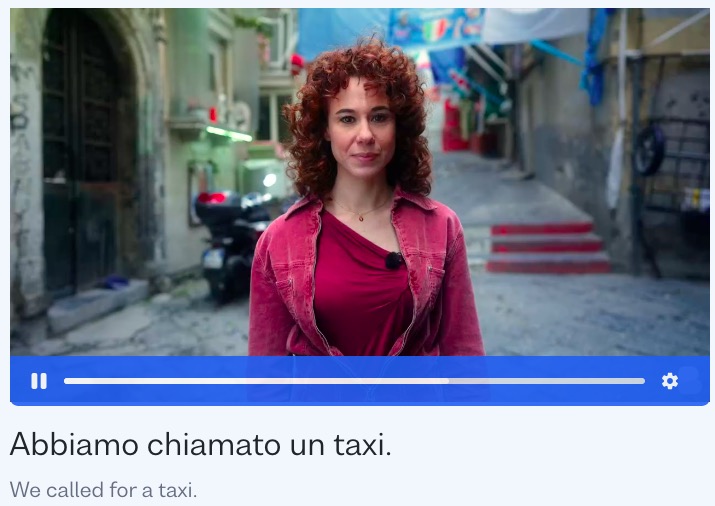All About Italian Articles: An Easy Guide
Begin using Italian articles right now with this easy, comprehensive guide to saying “the” and “a” in Italian.
I want to learn...
Today, we’re talking about Italian articles or articoli: the tiny words that introduce people, places, things and even vague concepts. There are two kinds: definite articles go before specific nouns, like “the”, and indefinite articles, which do the opposite and go before non-specified nouns. In English, this would be “a” or “an”.
In this article, we’ll learn the 7 different Italian definite articles, as well as the 4 Italian indefinite articles. Not only that, we’ll also talk about ways to know when to use articles in Italian. It’s a little different from English, but don’t worry — you’ll see the pattern soon enough!
Italian indefinite articles
Let’s start with indefinite articles or articoli indeterminativi because there are only four in Italian: un, uno, una and un’.
These articles agree with the noun they modify in gender (masculine or feminine) but there’s no such thing as a plural indefinite article. Because indefinite articles essentially mean “one” they are always singular and they will never go before a plural noun. It’s the same in English — we don’t say “a cakes”, only “a cake”.
How do you know which indefinite article to use? Look at the noun and see:
- What is the gender?
Generally, you can tell if a noun is masculine or feminine based on its ending. If it ends with -o, usually it’s masculine. If its last letter is -a, it’s probably feminine.
- What letters does it start with?
If the noun is masculine and starts with an s + consonant, i + vowel, gn, pn, ps, x, y or z, it will take uno. Anything else takes un.
Here’s a chart that breaks down each of the Italian indefinite articles and when to use them:
Italian indefinite articles
| Masculine article | Example | When to use it |
|---|---|---|
| un | un libro (a book) un amico (a friend) un autore (an author) | Nouns starting with a vowel or most consonants |
| uno | uno zaino (a backpack) uno scontrino (a receipt) uno studente (a student, male) | Nouns starting with s + consonant, i + vowel, gn, pn, ps, x, y or z |
| Feminine article | Example | When to use it |
| una | una ragazza (a friend) una zia (an aunt) una studentessa (a student, female) | Nouns starting with a consonant |
| un’ | un’amica (a friend) un’ora (an hour) un’acqua minerale (a mineral water) | Nouns starting with a vowel |
Definite articles in Italian
Italian definite articles or articoli determinativi refer to specific people, places or things, and these can pair with plural nouns.
In English, we only have one: “the”, but in Italian, there are seven different definite articles. Why? Because they agree with their noun in:
- Gender (masculine or feminine)
- Number (singular or plural)
- The first few letters of the noun
Let’s take a look at the definite articles, with some examples.
Definite articles in Italian
| Masculine | Singular | Plural |
|---|---|---|
| begins with a consonant | il il libro | i i libri |
| begins with a vowel | l’ l’albero | gli gli alberi |
| begins with s + consonant, i + vowel, gn, pn, ps, x, y or z | lo lo stadio | gli gli stadi |
| Feminine | Singular | Plural |
| begins with a consonant | la la donna | le le donne |
| begins with a vowel (a, e, i, o, u) | l’ l’amica | le le amiche |
Pro-tip: Watch out for tricky nouns. For instance, foto (photo) ends in an -o, but it’s actually not masculine — in fact, it’s feminine and takes la. Or automobile (car), whose plural becomes le automobili. In most cases, the ending will match the gender and number, but be sure to double check as you’re learning new nouns in Italian.
When to use articles in Italian?
In general, Italian indefinite articles are used in the same way and frequency as English. But Italian definite articles (_il, i, lo, gli, la, le _and l’) are used a bit more often than in English.
Use the indefinite article in Italian when talking about:
1. Possessive adjectives, unless you’re talking about a close family member.
- la mia casa (my house) ✓
- mia madre (my mom) ✓
- la mia madre X
2. Abstract concepts, like love or peace.
- l’amore (love)
- la bellezza (the beauty)
3. A language, unless you’re using the verb parlare (to talk).
- l’inglese (English)
- l’italiano (Italian)
4. Sports
- il calcio (soccer)
- la pallavolo (volleyball)
5. Time or days of the week
- il mercoledì (Wednesday)
- l’una (one o’clock)
- le 11.00 (eleven o’clock)
6. Clothing and parts of the body
- la testa (head)
- gli occhi (eyes)
- i pantaloni (pants)
7. Geographic locations, like countries, seas, lakes, mountains, etc. (but not towns or cities).
- L’Italia (Italy)
- Gli Stati Uniti (the United States) * Il Tevere (the Tiber)
Don’t feel like you need to be natural at all these rules immediately! When in doubt, remember Italian puts these little articles mostly in the same way that English does. Listening to native Italian speakers will help you get a feel for when to use articles and when to leave them out.
At Busuu, we believe learning is a life-long process — and it should be fun! We empower language learners like you to get the hang of Italian grammar and vocabulary in an organic way.
Ready for the next challenge?
Level up your Italian grammar skills with the help of Busuu’s free online language courses, crafted by experts. Then, put your knowledge to use in conversations with other Italian speakers.

